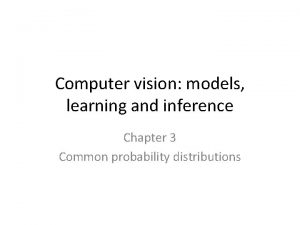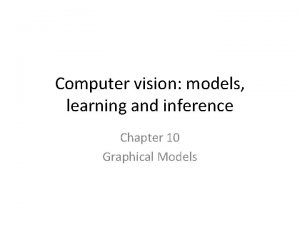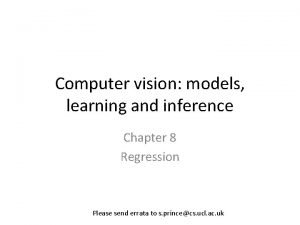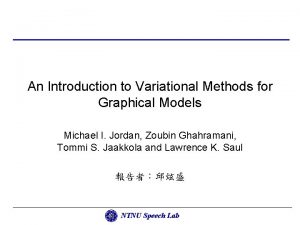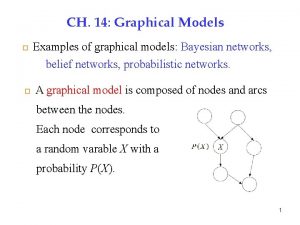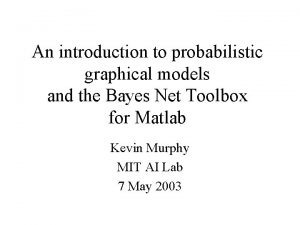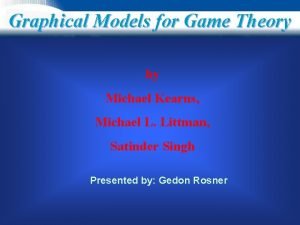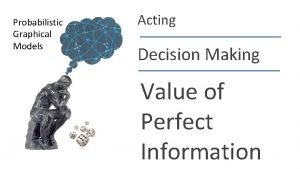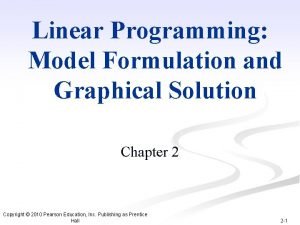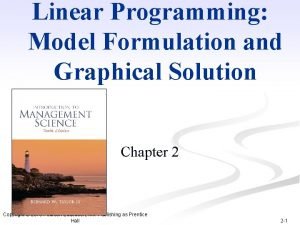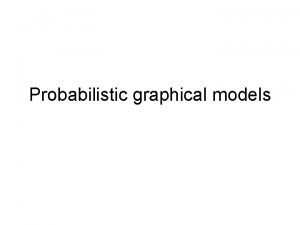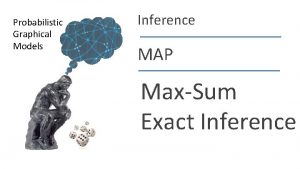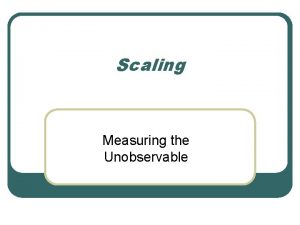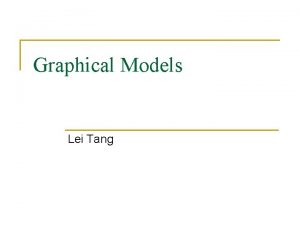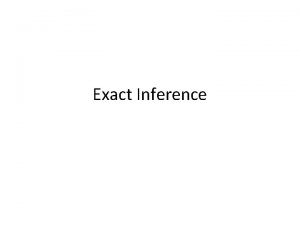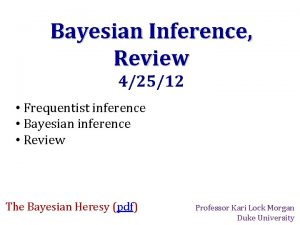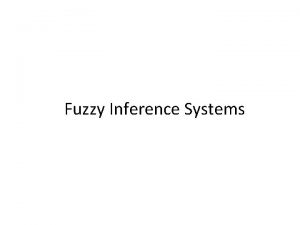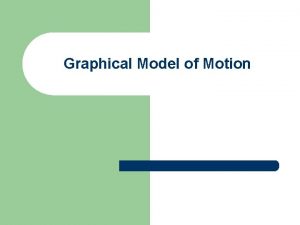Scaling Up Graphical Model Inference Graphical Models View









![Directed Graphical Models: Latent Dirichlet Allocation [B+03, SUML-Ch 11] • Prior on topic distributions Directed Graphical Models: Latent Dirichlet Allocation [B+03, SUML-Ch 11] • Prior on topic distributions](https://slidetodoc.com/presentation_image_h/0e973e00e76138249302eddcc3ca70bd/image-10.jpg)

![Parallel Collapsed Gibbs Sampling [SUML-Ch 11] • Parallel Collapsed Gibbs Sampling [SUML-Ch 11] •](https://slidetodoc.com/presentation_image_h/0e973e00e76138249302eddcc3ca70bd/image-12.jpg)
![Parallel Collapsed Gibbs Sampling [SN 10, S 11] • [S 11] Parallel Collapsed Gibbs Sampling [SN 10, S 11] • [S 11]](https://slidetodoc.com/presentation_image_h/0e973e00e76138249302eddcc3ca70bd/image-13.jpg)

![References [SUML-Ch 11] Arthur Asuncion, Padhraic Smyth, Max Welling, David Newman, Ian Porteous, and References [SUML-Ch 11] Arthur Asuncion, Padhraic Smyth, Max Welling, David Newman, Ian Porteous, and](https://slidetodoc.com/presentation_image_h/0e973e00e76138249302eddcc3ca70bd/image-15.jpg)
- Slides: 15

Scaling Up Graphical Model Inference

Graphical Models • View observed data and unobserved properties as random variables • Graphical Models: compact graph-based encoding of probability distributions (high dimensional, with complex dependencies) • Generative/discriminative/hybrid, un-, semi- and supervised learning – Bayesian Networks (directed), Markov Random Fields (undirected), hybrids, extensions, etc. HMM, CRF, RBM, M 3 N, HMRF, etc. • Enormous research area with a number of excellent tutorials – [J 98], [M 01], [M 04], [W 08], [KF 10], [S 11]

Graphical Model Inference • Key issues: – Representation: syntax and semantics (directed/undirected, variables/factors, . . ) – Inference: computing probabilities and most likely assignments/explanations – Learning: of model parameters based on observed data. Relies on inference! • Inference is NP-hard (numerous results, incl. approximation hardness) • Exact inference: works for very limited subset of models/structures – E. g. , chains or low-treewidth trees • Approximate inference: highly computationally intensive – Deterministic: variational, loopy belief propagation, expectation propagation – Numerical sampling (Monte Carlo): Gibbs sampling

Inference in Undirected Graphical Models •

Synchronous Loopy BP • Natural parallelization: associate a processor to every node – Simultaneous receive, update, send • Inefficient – e. g. , for a linear chain: [SUML-Ch 10]

Optimal Parallel Scheduling • Partition, local forward-backward for center, then cross-boundary Processor 1 Processor 2 Synchronous Schedule Parallel Component Gap Processor 3 Optimal Schedule Sequential Component 6

Splash: Generalizing Optimal Chains 1) Select root, grow fixed-size BFS Spanning tree 2) Forward Pass computing all messages at each vertex 3) Backward Pass computing all messages at each vertex • Parallelization: – Partition graph • Maximize computation, minimize communication • Over-partition and randomly assign – Schedule multiple Splashes • Priority queue for selecting root • Belief residual: cumulative change from inbound messages • Dynamic tree pruning

Experiments: MLN Inference 8 K variables, 406 K factors Single-CPU runtime: 1 hour Cache efficiency critical • 1 K variables, 27 K factors • Single-CPU runtime: 1. 5 minutes • Network costs limit speedups 120 100 80 60 40 20 0 Speedup • • Speedup DBRSplash: MLN Inference Experiments 60 50 40 30 20 10 0 No Over-Part 5 x Over-Part 0 30 60 90 Number of CPUs 120

Topic Models • Goal: unsupervised detection of topics in corpora – Desired result: topic mixtures, per-word and per-document topic assignments [B+03]
![Directed Graphical Models Latent Dirichlet Allocation B03 SUMLCh 11 Prior on topic distributions Directed Graphical Models: Latent Dirichlet Allocation [B+03, SUML-Ch 11] • Prior on topic distributions](https://slidetodoc.com/presentation_image_h/0e973e00e76138249302eddcc3ca70bd/image-10.jpg)
Directed Graphical Models: Latent Dirichlet Allocation [B+03, SUML-Ch 11] • Prior on topic distributions Document’s topic distribution Word’s topic Word Topic’s word distribution Prior on word distributions

Gibbs Sampling •
![Parallel Collapsed Gibbs Sampling SUMLCh 11 Parallel Collapsed Gibbs Sampling [SUML-Ch 11] •](https://slidetodoc.com/presentation_image_h/0e973e00e76138249302eddcc3ca70bd/image-12.jpg)
Parallel Collapsed Gibbs Sampling [SUML-Ch 11] •
![Parallel Collapsed Gibbs Sampling SN 10 S 11 S 11 Parallel Collapsed Gibbs Sampling [SN 10, S 11] • [S 11]](https://slidetodoc.com/presentation_image_h/0e973e00e76138249302eddcc3ca70bd/image-13.jpg)
Parallel Collapsed Gibbs Sampling [SN 10, S 11] • [S 11]

Scaling Up Graphical Models: Conclusions • Extremely high parallelism is achievable, but variance is high – Strongly data dependent • Network and synchronization costs can be explicitly accounted for in algorithms • Approximations are essential to removing barriers • Multi-level parallelism allows maximizing utilization • Multiple caches allow super-linear speedups
![References SUMLCh 11 Arthur Asuncion Padhraic Smyth Max Welling David Newman Ian Porteous and References [SUML-Ch 11] Arthur Asuncion, Padhraic Smyth, Max Welling, David Newman, Ian Porteous, and](https://slidetodoc.com/presentation_image_h/0e973e00e76138249302eddcc3ca70bd/image-15.jpg)
References [SUML-Ch 11] Arthur Asuncion, Padhraic Smyth, Max Welling, David Newman, Ian Porteous, and Scott Triglia. Distributed Gibbs Sampling for Latent Variable Models. In “Scaling Up Machine Learning”, Cambridge U. Press, 2011. [B+03] D. Blei, A. Ng, and M. Jordan. Latent Dirichlet allocation. Journal of Machine Learning Research, 3: 993– 1022, 2003. [B 11] D. Blei. Introduction to Probabilistic Topic Models. Communications of the ACM, 2011. [SUML-Ch 10] J. Gonzalez, Y. Low, C. Guestrin. Parallel Belief Propagation in Factor Graphs. In “Scaling Up Machine Learning”, Cambridge U. Press, 2011. [KF 10] D. Koller and N. Friedman Probabilistic graphical models. MIT Press, 2010. [M 01] K. Murphy. An introduction to graphical models, 2001. [M 04] K. Murphy. Approximate inference in graphical models. AAAI Tutorial, 2004. [S 11] A. J. Smola. Graphical models for the Internet. MLSS Tutorial, 2011. [SN 10] A. J. Smola, S. Narayanamurthy. An Architecture for Parallel Topic Models. VLDB 2010. [W 08] M. Wainwright. Graphical models and variational methods. ICML Tutorial, 2008.
 Computer vision
Computer vision Computer vision: models, learning, and inference
Computer vision: models, learning, and inference Computer vision models learning and inference pdf
Computer vision models learning and inference pdf Computer vision: models, learning, and inference
Computer vision: models, learning, and inference An introduction to variational methods for graphical models
An introduction to variational methods for graphical models Qm for windows
Qm for windows Action utility
Action utility An introduction to probabilistic graphical models
An introduction to probabilistic graphical models Graphical models for game theory
Graphical models for game theory What is the difference between models and semi modal
What is the difference between models and semi modal Chase geigle
Chase geigle Chase model inference
Chase model inference What graphical model is appropriate for decision-making?
What graphical model is appropriate for decision-making? Which energy
Which energy Linear programming model formulation and graphical solution
Linear programming model formulation and graphical solution Linear programming model formulation and graphical solution
Linear programming model formulation and graphical solution

